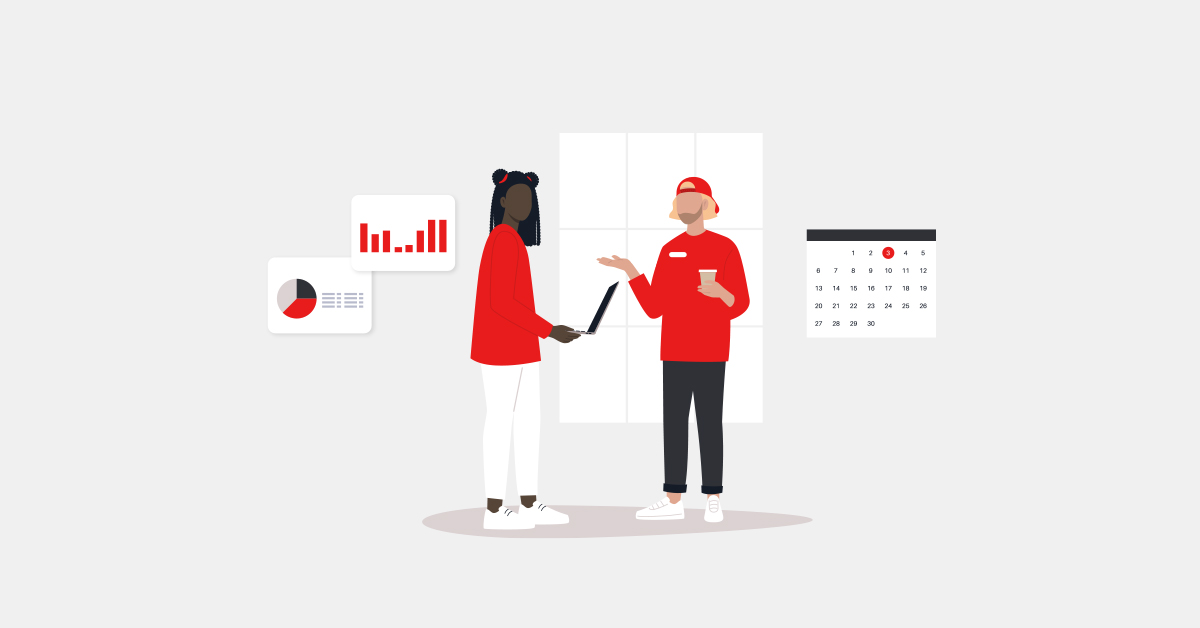
Employee performance is on the mind of every retailer. It can make or break your margins, be the defining aspect of your customer experience and totally change your hiring plans. Boosting employee performance to increase sales in your retail store.
How can you ensure that your sales associates, from the part-timers to the seasonal hires to the full-time long haulers, are giving your customers the best service possible? You might have a team of friendly employees, but how much are they actually selling?
Beyond that, having the knowledge and skills to make sales is just half the battle. Even when you do have a superstar team, how can you be sure they’re not burning out?
Look no further—the answers are right in front of you. We gathered up five tips to help you boost employee performance and avoid burnout:
- Establish employee mentor programs
- Inspire employees to consider a career in retail
- Use incentives and perks to improve employee performance
- Equip employees with technology they can use on the sales floor
- Limit overtime to avoid burnout
Drive repeat business by connecting with customers.
In this free recorded webinar, you’ll learn useful tips for engaging with customers throughout their buying experience.

1. Establish employee mentorship programs
To perform well, employees need to be refreshed—they need to feel connected to their workplace, not overwhelmed. To that end, one of the most effective tools for higher performance you can give your sales associates is each other.
RyanCarruthers of Together Software, a company that builds mentorship program software, says that businesses that implement mentorship programs help avoid burnout and increase employee performance. “The best way to help employees grow and find fulfillment in their roles is by connecting them. Of course, organizations need to address the issues of unsustainable workloads, but that’s the first step. Employees also need to feel part of a community. Communities with shared values make our work more meaningful, an effective antidote to burnout.”
A mentorship program means your employees never stop learning, as top performers connect with new employees and workers with lower sales numbers. Both parties have best practices enforced this way: the mentor reinforces what it is they’re doing that’s so effective, and the mentee picks up the more intricate tips of the trade. It also fosters community and friendships, which can help employees enjoy their work more.
Using data from your point of sale is a good way to identify your strongest and weakest sellers. You can start by pulling reports for total sales at the end of shifts and making a note of who’s on the floor when you have the highest and lowest sales. If you’d like to dive a little deeper, try measuring upsells and customer value by employee (get more tips how here).
2. Inspire employees to consider a career in retail
When your employees feel they’re part of a budding career, they’ll feel like their work has meaning and like they’re important, and as such be more motivated to sell.
It might sound obvious, but training your employees properly is key to motivating them to sell more. Many busy merchants limit training to showing new employees around and training them on a point of sale. But to encourage your sales associates to see retail as a career they’re invested in, you should keep the training going.
If you want your employees to perform well and stick around, ongoing training opportunities should be related to career paths you plan out together.
For example, retail giant H&M motivates their employees by explaining the paths to long-term careers in retail as opposed to hourly wage jobs. You can do the same for your sales associates. Show your employees what a career in retail looks like and where they could end up based on their strengths and interests—such as shift, store or district managers, visual merchandisers, or buyers and planners.
By making these career paths tangible, you can boost employee performance as they take on long-term goals related to their development.
To continue to enforce an employees’ ownership of their career, it’s important to give your employees routine feedback. What did they do well and how could they improve? Make time for quarterly reviews where you go over your employees’ goals, accomplishments, areas of improvement and compensation increases. In addition, have frequent informal one-on-one discussions with them and make sure they’re allowed to share their thoughts and concerns.
3. Use incentives and perks to improve employee performance
Well-compensated employees are motivated to sell more. Revising your compensation and incentives could be more effective at boosting sales than any advertising you might do—some companies find it 50% more effective, in fact.
Commission models are one of the more traditional ways of offering incentives to sales employees. Be warned, however: offering commissions can motivate sales associates, but can sometimes lead to resentment and unhealthy competition among staff. You want your staff to work as a team, but you also want to keep in mind that they want to make money just like anyone else. By giving the whole team a commission based on total sales, they’ll still be motivated to sell, but won’t fight over customers.
If a commission model isn’t right for your store, you can still offer fun perks to keep employees happy. Martin Seeley, Chief Executive Officer at MattressNextDay, advises retailers to boost performance through rewards that employees can use in their personal time. “Aside from salary increase, you can provide other perks and benefits that they can enjoy personally. Some discounts, gift cards and even online streaming subscriptions that they can use during their free time can be so much appreciated by employees.”
4. Equip employees with technology they can use on the sales floor
Retailers with excellent customer experiences have a secret: nearly half of them are training employees on tech that boosts customer engagement.
If you’re using a cloud-based point of sale system, you can get that kind of technology into your employees’ hands right away. When you arm your team with iPads that are running your point of sale (especially if you’ve loaded it with product photos and tags by brand and category), you’re essentially giving them a sales tool.
Sales associates can use iPads to quickly look up items that aren’t on the floor. They can also look up purchase history by customer (if available) to suggest other items based on past purchases. An iPad can act like a digital catalog to help them suggest items on the spot without needing to run back and forth to the back room.
This connectivity helps boost employee performance by offering customers a more personalized, streamlined experience in the store. Whether they’re new or they’ve worked for you for years, being closely connected to inventory and customer data means they come across as experts to your customers.
5. Limit overtime to avoid burnout
Employees suffering from burnout can’t give you their best performance, even if they want to. Unfortunately, front-line worker exhaustion is plaguing the retail industry—it’s the top reason retail workers are quitting the industry entirely.
Saurabh Wani from ZoomShift, an employee scheduling software for the retail industry, says that her company has found businesses with daily or weekly overtime limits have less burnout. “Employees that are close to crossing the overtime limit should get to swap shifts with someone to take time off. This makes them mentally healthy and happy, and helps boost their productivity.”
In addition to limiting overtime, try to avoid scheduling employees for the dreaded clopen shift—where an employee who closed the night before must open the next day. Clopen shifts exhaust employees, and tired sales associates aren’t at the top of their game.
If you’re currently suffering from a staffing shortage and can’t give employees ideal schedules, keep in mind the second and third top reasons retail workers are burning out: lack of appreciation and poor pay.
Implementing our other tips—in particular, plotting out career paths and providing incentives—and increasing pay will help employees through busy periods while you fill out your team. These measures will help you in the hiring process as well, as they make your store an attractive place to work.
A little goes a long way for employee performance
At the end of the day, retail workers want to be appreciated, respected and compensated. You know you value your employees—tweaking the way you do things even a little can help them feel it as well.
A cloud-based point of sale will help you out, from giving you ways to measure employee performance to equipping your sales associates with technology that impresses customers. And that’s just the beginning—ready to watch a demo and see what all Lightspeed can do for you?

News you care about. Tips you can use.
Everything your business needs to grow, delivered straight to your inbox.


